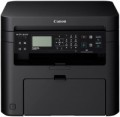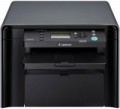Max resolution
The maximum resolution of the image to be printed. It is usually indicated by two numbers indicating the number of dots per inch (dpi) horizontally and vertically, for example 1200x600. The detail of the image depends on this parameter – the higher the resolution, the more fine details the printer is able to convey and the better their image will be. High print resolution is important, foremost, operating with graphic material; low resolution is sufficient for high-quality text display. So there are the following options:
600x600,
1200x600,
1200x1200,
1800x600,
2400x600,
2400x1200,
2400x2400,
4800x600,
4800x1200,
4800x2400,
5760, and
higher print resolutions.
Monthly Duty Cycle
The maximum number of pages that the MFP can print in a month while remaining fully operational.
Black Ink Page Yield
Approximate number of pages that the MFP can print in black and white mode without replacing the cartridge. In fact, this greatly depends on the specs of the images to print, so the actual resource may greatly differ from the claimed one in one way or another. Nevertheless, according to this indicator, it is quite possible to evaluate the capabilities of the MFP and compare it with other models.
Cartridge model
Types of cartridges (both black&white and colour) used in the MFP. Some models of the MFP are able to work with third-party cartridges, but this feature usually refers to undocumented, and the manufacturer's warranty applies only to specific types of cartridges. So, use third-party compatible cartridge models with caution.
Data transfer
—
Connection to PC (USB). USB is a universal interface used to connect various devices in computer technology, and it is the most popular among these standards nowadays. In this case, it is used to connect the MFP to a computer.
— Network connection (
LAN). Port for wired connection to LAN and/or the Internet. This feature allows you to use the MFP in the format of a network device — getting access to printing, scanning, etc. from any computer of the network, or even use cloud printing (see below). At the same time, some models may require a print server for operating via LAN — a separate PC, router or NAS server responsible for managing the MFP and acting like an intermediary device between the MFP and the rest of the network. However, most modern MFPs can also work in peer-to-peer networks — without a print server, with a direct connection through a simple router.
An alternative to LAN is wireless Wi-Fi (see below); a wired connection is less convenient due to the need to put cables, but it is more reliable and cheaper.
—
Wi-Fi. A technology used to make wireless connection to LAN and/or the Internet, and to connect devices directly to each other. For the last option, see
Wi-Fi Direct below; and a network connection allows the MFP to operate as a network device — similar to the LAN described above. At the same time,
...a wireless connection is somewhat more expensive than a wired one, but it is more convenient because of cable absence.
Modern MFPs may use different Wi-Fi standards — most often it is Wi-Fi 4 (802.11n) and Wi-Fi 5 (802.11ac). In most cases, you should not pay special attention to this nuance: the standards differ primarily in speed, however, these differences are not significant regarding the tasks MFP are operating with; and there are usually no problems with the compatibility of different standards with each other.
— Card Reader. Slot for reading memory cards, usually, with the feature of direct printing (see above). In this case, this function is convenient primarily because memory cards are widely used in modern photo and video cameras; thus, the card reader allows you to quickly and conveniently print the footage — just remove the card from the camera and install it in the MFP. However, this function can be also useful for exchanging data with other devices — for example, laptops; and in some models of the MFP, it is even possible to work in the mode of an external card reader for a PC.
— USB. A classic USB connector for connecting various external media — flash drives, digital cameras, external hard drives, etc. The presence of such a connector usually means at least the possibility of direct printing the content from the connected device, without the need to use a PC. However, there may be other purposes of use, such as copying scanned materials to external media.
— Bluetooth. The technology of wireless communication between various devices is convenient primarily due to the absence of wires. The specific use of Bluetooth in multifunction devices may vary. Some models use such a connection to connect to a PC; this is especially convenient for laptops — almost all modern laptops have built-in Bluetooth modules. Other MFPs allow you to send files from smartphones, tablets and other mobile devices for printing via Bluetooth, or copy scanned materials to external devices. There are models that combine these functions in one way or another. Such details should be clarified separately.
— NFC. Short-range wireless standard with a range limit about 10 cm. Most often used to simplify connection via Wi-Fi or Bluetooth (see above): no need to fiddle with the settings, just bring an NFC-compatible device to the NFC of the MFP and confirm the connection. The other way to use NFC is to automatically send materials for printing when you bring your smartphone or tablet to the device; such feature is usually carried out through a special application released by the MFP's manufacturer.
— Wi-Fi Direct. A feature found on models with built-in Wi-Fi modules (see above). Direct support allows you to connect other Wi-Fi devices (laptops, smartphones, cameras, etc.) to such an MFP directly, without using a router and a local network. This can be especially convenient if there is no network equipment, or if it needs to be additionally configured. The functionality of the Wi-Fi Direct connection is generally similar to Bluetooth (see above); the main difference is that Wi-Fi provides a faster and more reliable connection with a greater range. This is especially useful for transferring large volume of data — for example, sending large documents for printing or copying high-resolution scanned materials. In addition, such a connection is better suited for direct printing from cameras — Wi-Fi is the most common type of wireless connection in that devices.
— AirPrint. Same function as above (Wi-Fi Direct). Allows you to connect to a device without using a router or installing specialized drivers. However, in this case, we are talking about connecting Apple equipment — iPhones, iPad, Mac laptops. AirPrint-enabled printers are natively compatible with devices running iOS or Mac OS software. Printing can be done via a wireless Wi-Fi connection, an Ethernet cable or via a regular USB connection.Cloud printing
Cloud-enabled MFPs allow you to work directly with cloud services without connecting to a PC.
The general point of such printing is that the documents sent for printing (and in the case of MFPs, also scanned materials) are stored on a server on the Internet. Thus, the connectivity of the printer/scanner is not limited to the local network — you can send documents for printing and receive scan results from anywhere in the world where there is access to the World Wide Web. In addition, cloud services make it easy to share access to the MFP and other people.
Note that cloud printing can also be used with MFPs, that do not have such a function by themselves — for this, you need to connect the device to a PC with the appropriate software.
Display
The type of display provided in the design of the MFP. This parameter is indicated by two points — colour (monochrome or
colour display), as well as the availability of a
touch screen(if only spec 'coloured' is indicated, then the display is non-touch).
Chroma determines the features of the image on the display. Monochrome (black and white) displays allow you to show a lot of different information, and are inexpensive. On the other hand, such a display is poorly suited for viewing drawings and photos sent for printing, the results of scanning pictures, etc. — for such purposes it is better to use more expensive, but more functional colour displays.
As for touch displays, they provide additional convenience in management and expand its capabilities. Various controls can be displayed on such a display — sliders, lists, text menus, etc.; operating them with touches on the display is easier than using traditional control panels with hardware buttons. On the other hand, the presence of a sensor affects the cost of the display, and it makes sense to use this feature mainly in advanced MFPs with an abundance of additional functions.
RAM
The amount of built-in memory provided in the MFP.
This parameter determines not only the amount of information that can be simultaneously stored in the device, but also the specifics of memory usage. With relatively small volumes of the built-in storage (up to 400 – 500 MB), it is mainly used to store print tasks and scan results — until the tasks are completed and digital copies of documents are transferred to their destination. Among high-end MFPs, there are modules, which volume is already calculated in gigabytes. Usually, the presence of this amount of internal memory means that the device has an extensive set of built-in tools, including the ability to use it as a temporary storage for document files.
Noise level
The maximum noise level coming from the MFP during operation. The smaller this value, the more comfortable the use of the device. For office use, this parameter is not so important, but you should pay attention to it if you are going to use the device at home. It is easiest to evaluate a specific noise level using special comparative tables. For example, the quietest modern MFPs can operate with 34-35 dB noise level which is approximately corresponds to a muffled conversation, and the heaviest and most performant models give out up to 75 dB — this is comparable to a scream or a loud laugh at a distance of 1 m.

